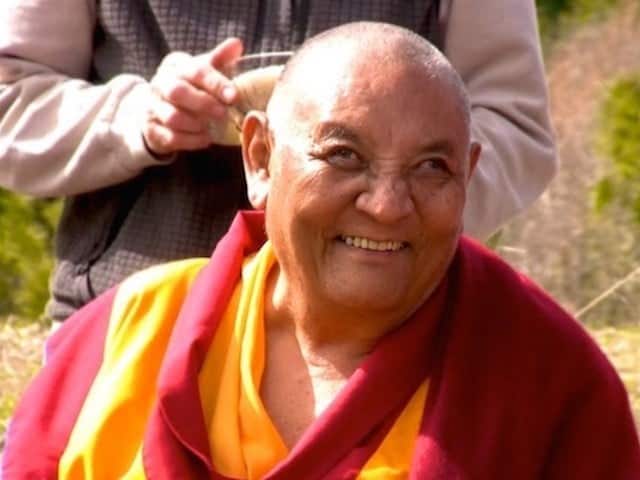Understanding the self
Understanding the self
From December 17 to 25, 2006, at Sravasti Abbey, Geshe Jampa Tegchok taught on A Precious Garland of Advice to a King by Nagarjuna. Venerable Thubten Chodron complemented these teachings by giving commentary and background.
- By seeking temporary happiness and identifying with the ego, we waste our precious life
- Bodhicitta, the mind that contradicts the ego
- Relationship between self and the aggregates
- Understanding the differences between the self and the aggregates
Precious Garland 06 (download)
Motivation
Although we all want happiness and to be free from suffering—we don’t understand what happiness is very well. And we don’t understand what the causes of happiness are. And similarly we don’t understand the causes of suffering very well. So our self-centered thought says, “Having my way is happiness. Establishing myself as confident or good looking or athletic or intelligent or creative or whatever else we want to be. Establishing myself as that; that is happiness: making other people believe it. And so we go about so many activities trying to make things be the way we want them to be, trying to establish ourselves as this or that kind of person in the eyes of others and in our own eyes. And in the process of doing that, we engage in a lot of harmful actions. And we also waste a lot of time because we spend our time trying to secure our ego identity in this life. And yet this life is like sand slipping through our fingers. Each moment we’re coming closer to death. And at the time of death our ego identity does not come with us, nor does our reputation or all the approval other people give us. In the long term none of that is worth very much at all, because at the time of death what is important is the karma that we’ve created and the mental habits that we’ve developed. Those are the things that go into the future life. Those are the things that will determine in the long term whether we’re happy or miserable. Those are the things that will influence whether we attain liberation and enlightenment or a lower rebirth. And so it’s important to pay attention while we’re alive to what is important. And to put energy into that so that we can actually attain the aims that we seek: the lasting state of peace and bliss that we all desire.
So one very effective antidote to this self-centered thought that bungles the whole thing is bodhicitta: the mind that cherishes sentient beings as much as or more than our self. The mind that wants to work for the benefit of all sentient beings: ourselves and others. And therefore wants to develop the full compassion, wisdom and power of an enlightened being. And so generate that long term motivation, make arise that bodhicitta in the mind, so that the self-centered thought can’t run the show and subsides.
The relationship between the self and the aggregates
There are a few things that I just wanted to tie up from the previous talks and to say as a way of introduction to what Khensur Rinpoche may be saying. Of course I have no idea what he’s going to say. A lot of the study or the examination of emptiness depends on looking at and investigating what is the relationship between the self and the aggregates. So the aggregates are the body and the mind. In particular, the body is the form aggregate, the mind are the four mental aggregates: feeling, discrimination or discernment, compositional factors, and consciousness. And if it sounds familiar: you’ve been reciting it in the heart sutra every day.
We’re looking at what is the self: the person in relationship to the aggregates. Is the I the same as the aggregates? Is it different from the aggregates? What’s the relationship between the two? So in general we say the self depends on the aggregates. In fact, the self is what exists by being merely labeled in dependence on the four or five aggregates. They say four or five aggregates because according to the sutra view the beings in the formless realm don’t have a form aggregate. They don’t have a body. So they only have the four mental aggregates. So the self is what exists by being merely labeled in dependence on the four or the five aggregates. And we can see this. There’s something walking down the street; we see the body and we label, “Oh, there’s Joe.” So on the basis of seeing Joe’s body we label “Joe.” Joe and Joe’s body are different. Body is a body. A person is a person.
[End of recording; this recording is incomplete. The rest of the talk was not recorded successfully.]
Venerable Thubten Chodron
Venerable Chodron emphasizes the practical application of Buddha’s teachings in our daily lives and is especially skilled at explaining them in ways easily understood and practiced by Westerners. She is well known for her warm, humorous, and lucid teachings. She was ordained as a Buddhist nun in 1977 by Kyabje Ling Rinpoche in Dharamsala, India, and in 1986 she received bhikshuni (full) ordination in Taiwan. Read her full bio.

